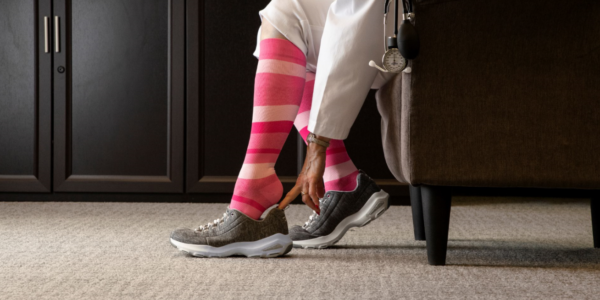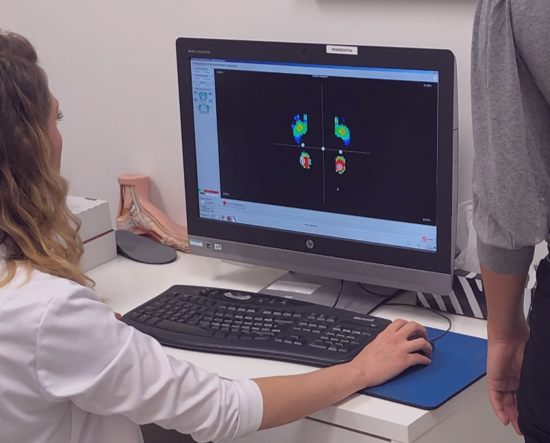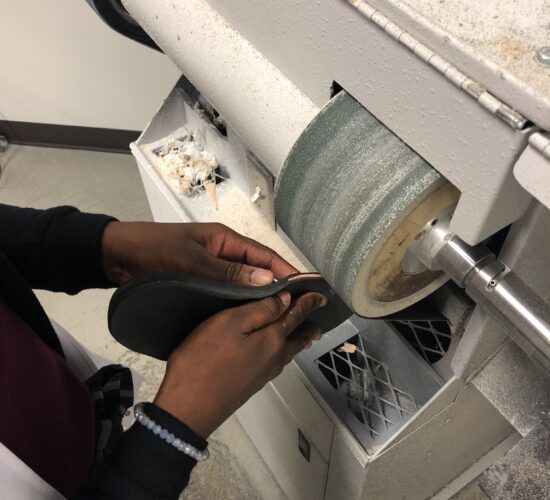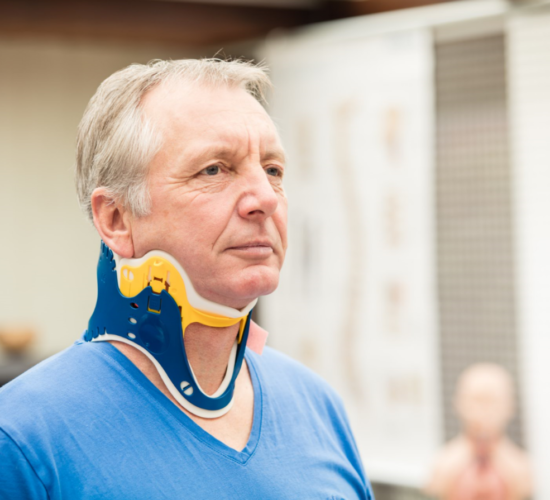Venous insufficiency is a fairly common condition characterized by poor blood circulation in the veins. It most often manifests itself in the lower limbs. Venous insufficiency has consequences such as the sensation of heavy legs, calf pain or the development of superficial phlebitis.
Fortunately, there are many possible treatments available today. Wearing stockings or compression garments is a good example. There are several compression grades, this is determined by the attending physician. The compression grade varies according to the condition. Read more about compression stockings and garments and compression grades.
What are the causes of venous insufficiency?
The origins of venous insufficiency are difficult to identify. However, several factors are often linked to it: physical inactivity, overweight, family heredity or smoking. Pregnancy can also be associated with circulatory disorders, as well as some professions that require long hours of standing (e.g. flight attendants or nurses).
Beyond the causes of venous system disease, it is interesting to look at the mechanisms leading to the appearance of the various symptoms associated with this condition.
Venous insufficiency is characterized by a dysfunction of the venous system that can affect both superficial and deep veins. When the vein is “sick”, venous return is more difficult and the blood will remain inside the veins causing what is called venous stasis.
Venous stasis in the foot or legs will then lead to multiple symptoms such as swelling of the lower limbs, a feeling of heaviness in the legs, pain in the calves during the night or the appearance of veins dilate until varicose veins appear.
The symptom of heavy legs is the most frequent symptom and the one that appears the earliest during the development of venous insufficiency. As a light and preventive treatment, it is often recommended to be physically active and to wear light compression stockings on a daily basis in the following cases:
- long journeys by plane or car
- long periods of work in the same position
- recovery during or after physical exercise
What are the consequences of venous insufficiency?
Although venous insufficiency is a rather frequent condition with multiple causes, the consequences are still unknown. In addition, people suffering from it rarely consult a professional since the symptoms caused may initially seem harmless (e.g., the feeling of heavy legs). However, the consequences of poorly treated venous insufficiency can be serious. It can, for example, generate phlebitis. The latter implies that the blood circulation within a blood vessel is hindered by a significant blood clot size. This clot can then completely block the vessel, causing pain and inflammation in the affected area.
This is why it is necessary to consult a professional at the first sign, such as the appearance of spontaneous bruises, varicose veins on the legs or pain in the lower limbs.
How to treat venous insufficiency?
There are many alternatives to improve leg circulation and reduce the symptoms of venous insufficiency. The first recommendations generally involve lifestyle changes, i.e. maintaining an active lifestyle through regular sports activity. Another option is to use compression stockings with the objective of considerably improving venous return by accompanying the return of blood to the upper leg.
Medicus: to find the perfect compression product
Since 1957, Médicus has been contributing to the health of thousands of Quebecers through the use of effective, modern compression stockings and clothing that can respond to a variety of pathologies related to blood circulation and the venous system.
Whether it is to avoid varicose veins, eliminate heavy legs or overtake you in sports, compression stockings and clothing can meet many needs.
Covered: Microfiber Shades – 15-20 mmHg (women) from Sigvaris Group.






